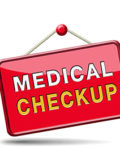
September is Healthy Aging Month tips. Photo: Deposit Photos
September is Healthy Aging® Month, the national observance month created by the Healthy Aging® organization over 25 years ago.
The mission behind September is Healthy Aging® Month, is to draw attention to the importance of healthy lifestyles for adults, 45-plus,” according to Carolyn Worthington, president of Healthy Aging®, an international multi-media platform.
“Since we kicked off the observance month in the early 1990s, there have been no more significant changes in the world and the lives of older adults than what we have seen over the past year and a half,” Worthington said. “We’ve hunkered down, taken stock of our health status, changed the way we communicate, work and play. While it’s been a challenge in many ways, we can now ready to capitalize on what we’ve learned and move forward in a healthy, positive way.”
What has not changed and is more important than ever is the opportunity to follow a healthy lifestyle, remain positive and passionate about life, and look forward to better days ahead.
Sometimes, it isn’t easy, though, to get going. If you are in that boat and feel you need a boost to improve your lifestyle, here are ten tips for physical, social, mental, and financial wellness in recognition of September is Healthy Aging® Month.
10 Tips For September is Healthy Aging® Month
Mental Wellness
Let’s start with mental wellness.
The highest levels of anxiety and depression have been reported since the pandemic began. According to Mental Health America, a national community-based nonprofit dedicated to addressing the needs of those living with mental illness , loneliness and isolation are still a significant trend.
Tips for mental wellness:
1. Be realistic
If you feel overwhelmed by some activities (yours and/or your family’s), learn to say NO! Eliminate an activity that is not absolutely necessary. You may be taking on more responsibility than you can or should handle. If you meet resistance, give reasons why you’re making the changes. Be willing to listen to other’s suggestions and be ready to compromise.
2. Shed the “superhero” urge
No one is perfect, so don’t expect perfection from yourself or others. Ask yourself, “What really needs to be done?” How much can I do? Is the deadline realistic? What adjustments can I make?” Don’t hesitate to ask for help if you need it.
3. Take one thing at a time
For people under tension or stress, an ordinary workload can sometimes seem unbearable. The best way to cope with this feeling of being overwhelmed is to take one task at a time. Pick one urgent task and work on it. Once you accomplish that task, choose the next one. The positive feeling of “checking off” tasks is very satisfying. It will motivate you to keep going.
For more mental wellness tips, visit Mental Health America.
Physical Fitness
Aside from the pandemic, according to the National Center for Chronic Disease Prevention and Health Promotion, about six in ten adults in the U.S. have a chronic disease, and four in ten have two or more.
These diseases include heart disease, cancer, chronic lung disease, stroke, Alzheimer’s Disease, diabetes, chronic kidney disease. Risk behaviors are primarily behind these diseases, such as tobacco use, poor nutrition, lack of physical activity, and excessive alcohol.
There are many benefits of physical activity for adults and older adults.
Exercise has been proven to lower the risk of cardiovascular disease, including heart disease and stroke), hypertension, type 2 diabetes, cancers of the bladder, breast, colon, esophagus, kidney, lung, and stomach. Keeping fit helps improve cognition, reduces the risk of dementia (including Alzheimer’s disease), builds skeletal muscle strength, power, endurance, and mass.
We are meant to move. Exercise and strength training improves the quality of life, reduces anxiety, the risk of depression and improves sleep to say nothing of potential weight loss, improved bone health, and a lower risk of falls.
Tips for Physical Fitness:
4. Move more, sit less
The first key guideline for adults is to move more and sit less.
This recommendation from health.gov is based on new evidence that shows a strong positive relationship between increased sedentary behavior and increased risk of all-cause mortality, heart disease, and high blood pressure.
All physical activity, especially moderate-to-vigorous activity, can help offset these risks. Even for inactive adults, replacing sedentary behavior with light-intensity physical activity is likely to produce some health benefits.
5. Aerobic exercise
For substantial health benefits, adults should do at least 150 minutes (2 hours and 30 minutes) to 300 minutes (5 hours) a week of moderate-intensity, or 75 minutes (1 hour and 15 minutes) to 150 minutes (2 hours and 30 minutes) a week of vigorous-intensity aerobic physical activity, or an equivalent combination of moderate- and vigorous-intensity aerobic activity. Preferably, it would be best if you spread aerobic exercise throughout the week.
6. Muscle strengthening
Adults should also do muscle-strengthening activities of moderate or greater intensity, involving all major muscle groups on two or more days a week, as these activities provide additional health benefits.
For more physical fitness tips, visit Health.gov
Diet
We can all collectively grown over this statistic … 42 percent of Americans have packed on the pounds with an average weight gain of 29 pounds since the start of the pandemic. Not only have many been eating more, according to a survey by the American Psychological Association, but alcohol consumption increased too.
What to do?
If you need a reset on your diet, check out the Dietary Guidelines for Americans 2020 – 2025 published by the USDA.
In a nutshell, the USDA suggests a healthy eating plan by doing the following:
7. Review your daily diet and make necessary changes
Choose a diet that emphasizes fruits, vegetables, whole grains, and fat-free or low-fat milk and milk products; includes a variety of protein foods such as seafood, lean meats, and poultry, eggs, legumes (beans and peas), soy products, nuts, and seeds.
Chose a diet low in saturated fats, trans fats, cholesterol, salt (sodium), and added sugars and stay within your daily calorie needs
If you need some free help, try the Start Simple with MyPlate app. This app is easy-to-use and helps you pick simple daily food goals, see real-time progress, and earn badges along the way. After you log in your age, sex, height, weight and physical activity, you receive an instant, customized food plan.
Social
As a result of the lengthy lockdowns during the pandemic and now a fear of more to come, how we socialize is up in the air. We are social animals and crave human interaction. Pre-pandemic, many of us could only think of getting away for peace and solitude. Now, we are looking for ways to get back together under the current conditions.
After prolonged isolation, some older adults find it hard to get out without being mentally exhausted. With different opinions on how to socialize (fist bump, handshake, hug, or not to hug), it’s hard to know what to do.
Looking for ways to socialize while still keeping your distance? Here are some ideas.
8. Volunteer
Change the world by volunteering. Become a United Nations Volunteer.
The UN Volunteers website currently lists over 150 ideas from around the world. Here are a few examples: volunteer to make a field hockey website for kids in Sierra Leone, Africa; write up UN volunteer stories from the Asia Pacific; teach elementary students via Skype in southern India once a week. Or you can volunteer to translate, proofread and develop websites.
Become an Audio Book Volunteer
Volunteer to read and record chapters of books in the public domain for LibriVox
9. Dream and then get to it
Visit the U.S. National Parks in Google Earth which brings the national parks to you in a Google Earth guided tour through 31 different parks around the country.
“From the breathtaking vistas of the Shenandoah Valley to the awe-inspiring hoodoos of Bryce Canyon, the National Parks allow us to truly experience the natural wonders of our country. Start with the pink granite formations of Otter Cliff in Maine’s Acadia National Park, then head west to explore the ancient Pueblo dwellings of Mesa Verde National Park in Colorado. Finally, complete your journey with a peek through the North Window Arch in Utah’s Arches National Park.”
The producers of the National Parks program hope that “Once you’ve virtually explored the national parks in Google Earth, we encourage you to put down your phone, put on some sunscreen and get outside to explore the wonders that our parks system has to offer. Start by finding the park closest to you.”
Financial
10. Launch your next career
Capitalize on your career experience and start a new one. Yes, enjoy a brief “retirement.” Travel, spend more time with family and friends. Develop new hobbies. And, then become an entrepreneur. Statistics show people who retire and do nothing are more likely to die within 3 years.
Here are resources that can help you launch your next career suggested by the U.S. Senate Special Committee on Aging:
Encore.org. Learn about programs and opportunities designed to help seniors pursue careers after retirement. IRS Small Business and Self-Employed Tax Center. Provides information about the various tax provisions that affect American businesses.
SBA.gov. A step-by-step guide on how to start a new business.
SBA Office of Veterans Business Development. Supports veterans, reserve component members, and their dependents or survivors in the business community.
SCORE. Educates entrepreneurs and helps small businesses start, grow, and succeed nationwide. StartupAmericaPartnership.org. Delivers strategic and substantive resources to help entrepreneurs start and scale companies.
So, grab onto that “back to school” feeling and make September is Healthy Aging Month the perfect time to renew or set your lifestyle goals.












